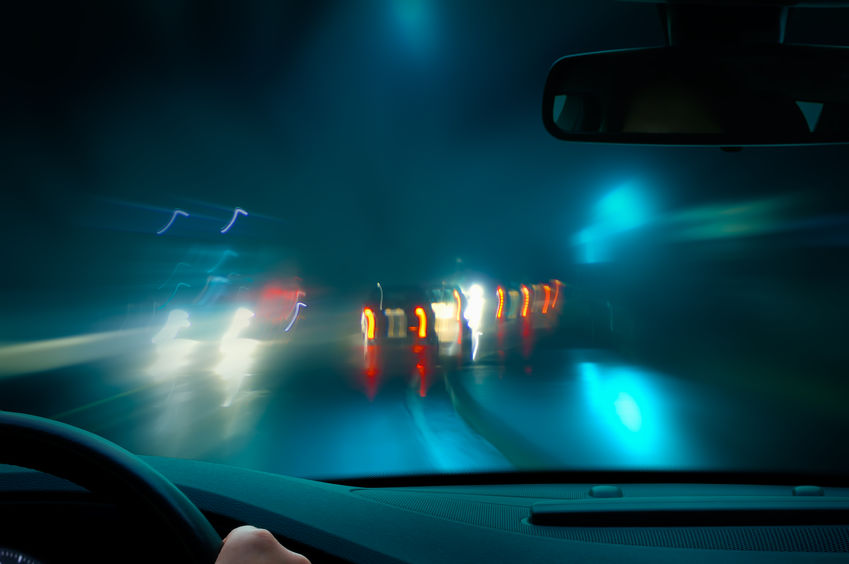Are Headlights Leaving Drivers in the Dark?
December 26, 2018 | Category: Automobile Accidents | ShareOn November 29, 2018, the Insurance Institute for Highway Safety (IIHS) said that although headlights have improved since 2016, base model vehicles in 2018 “leave drivers in the dark.”
 IIHS found that just over half of the 165 vehicles rated are available with adequate headlights for lighting the road at night and limiting glare of oncoming vehicles. However, better night-driving headlights are available for purchase with upgraded packages.
IIHS found that just over half of the 165 vehicles rated are available with adequate headlights for lighting the road at night and limiting glare of oncoming vehicles. However, better night-driving headlights are available for purchase with upgraded packages.
David Aylor, manager of active safety testing at IIHS, said, “Consumers shouldn’t have to buy a fully-loaded vehicle to get the headlights they need to safely drive at night. All new vehicles should come with good headlights.”
Engineers at IIHS evaluated 424 headlight variants. Sixty-seven percent earned a marginal or poor rating because of inadequate visibility, excessive glare from low beams from oncoming drivers, or both.
National Highway Traffic Safety Administration (NHTSA) statistics show that about half of all fatal crashes in the United States occur in the dark. More than a quarter of these accidents occur on unlit roads.
"In the past two years, manufacturers have made changes to improve headlights, whether through better aim or the light source itself," Aylor said. "But we still see a lot of models where the base headlight is poor, so buyers really have to do their homework to make sure they are getting the best available headlights."
The National Safety Council (NSC) says driving in the dark is really risky. “Traffic death rates are three times greater at night than during the day.”
To keep you safe on the road after sundown, iDriveSafely has put together a hit list of top tips for driving safely at night:
- Clean Your Windshield – Dirty windshields can cause blinding glare.
- Check Your Lights – Make sure your headlights are working and aimed properly.
- Don’t Look Into the Light – Oncoming vehicles with their headlights on can cause night blindness. Drivers are encouraged to gaze down and to the right, while focusing on the white line.
- Increase Distance and Reduce Speed - Use your headlights to help you gauge your distance and stopping time. If you can’t stop within the illuminated area, you’re too close. Another way to gauge your distance is by using the 3-second rule: as the vehicle in front of you passes a designated landmark along the road (a tree, a construction barrel, etc.), there should be at least a 3-second gap before you reach the same area. If it takes less than 3 seconds to catch up, slow down.
- Be Seen on the Side - If you need to pull over, be sure you’re easily seen by other drivers. Carry reflective triangles, turn on your hazard lights, and even turn on your dome light to increase your chances of being seen. And remember: the safest place to wait for help is inside your car.
- Don’t Be Distracted - Whether you’re texting, fiddling with the radio, or dining in your car, taking your attention off the road is dangerous. When you’re tired after a long day at work, your reaction times will be reduced. Taking your full attention off the road is a bad idea.
- Watch for Pedestrians - Walkers and joggers don’t always wear safety gear, and they can be incredibly difficult to see after dark. Always take extra time to watch for pedestrians, especially on poorly-lit roads. If you’re at an intersection, be sure to look both ways before you make your move to ensure no one is stepping off the curb.
- Don’t Drink and Drive - Fatal alcohol-related accidentsare four times higher at night than during the day. Don’t put yourself or others at risk by driving under the influence. Use defensive driving techniques and keep an eye out for signs of drunk driving, especially after dark. Keep your distance and if you can, safely call 911.
“Being in an accident can be devastating. We at Spivey Law Firm, Personal Injury Attorneys, P.A. urge purchasers of new vehicles to make sure the vehicle they are considering has the best possible headlights for night driving. In addition, nighttime drivers should not just depend on their headlights to stay accident-free when driving at night. They also need to follow the tips listed in this blog,” urged Fort Myers Car Accident Attorney, Randall Spivey. “If you or a loved one is injured in an accident, after seeking medical attention, contact our experienced legal team. We are available 24/7 to assist you.”
Fort Myers Car Accident Attorney,Randall L. Spivey is a Board Certified Trial Attorney – the highest recognition for competence bestowed by the Florida Bar and a distinction earned by just one (1%) percent of Florida attorneys. He has handled over 2,000 personal injury and wrongful death cases throughout Florida. For a free and confidential consultation to discuss your legal rights, contact the Spivey Law Firm, Personal Injury Attorneys, P.A., in Lee County at 239.337.7483 or toll free at 1.888.477.4839,or by email to Randall@SpiveyLaw.com. Visit SpiveyLaw.com for more information. You can contact Spivey Law Firm, Personal Injury Attorneys, P.A.in Charlotte County at 941.764.7748 and in Collier County 239.793.7748.

